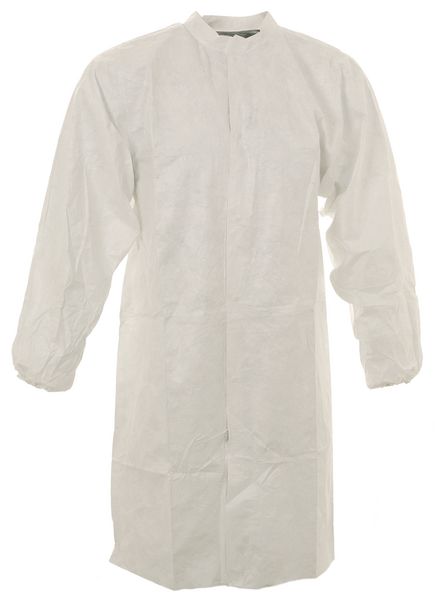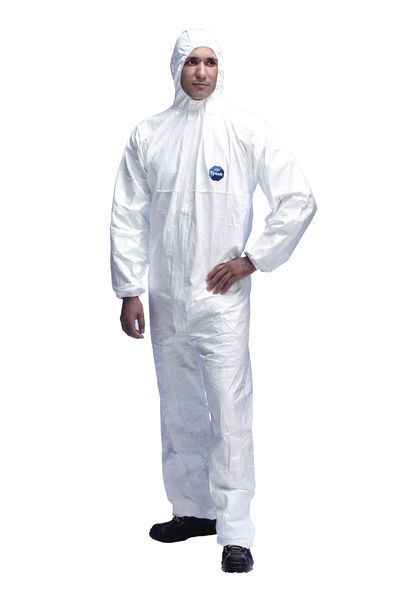Tyvek® a unique protective material with numerous applications
In 1955 the Du Pont Company made a chance discovery that would lead to the invention of Tyvek®; a lightweight and durable material that has a superior strength-to-weight ratio than paper but is more cost effective than treated fabrics. Employee Jim White noticed polyethylene fluff emanating from a pipe during an experiment in an DU Pont lab. Intrigued, a program was initiated to develop the new material and learn its properties and a patent proposal was submitted a year later for ‘strong yarn linear polyethylene’. The spinning technology needed to produce the new material took several more years to perfect, but by 1959 a pilot facility was set up to manufacture the material. Initially the plant manufactured book covers, tags and some garments. It took a further 6 years for the newly engineered sheet structure to be given the name Tyvek® and two years later, in 1967, the commercial manufacture of Tyvek® protective clothing and other Tyvek® products began.
Today Tyvek® is a leader in protective barrier technology as it absorbs little or no moisture, is strong and rip resistant and is used in a wide range of protective clothing including overalls and lab coats. Tyvek® is a unique non-woven material that does not need to be coated or treated so maintains wearer protection for the entire life of the garment. Manufactured from a spunbond olefin sheet Tyvek® has a distinctive look and feel and is ideal for company logos or other designs. Tyvek® is permeable to both air and water vapour but naturally repels water based liquids and aerosols and is an effective barrier against fine particles and fibres. These properties make Tyvek® protective clothing ideal for a wide range of applications including spray painting, asbestos abatement, clean room applications, chemical handling and more.
Spunbond FabricsThe process of manufacturing non woven fabrics is essentially broken down into 3 stages; web formation, bonding treatments and the finishing process. Firstly the fibres or filaments are laid in a sheet or web by one of 4 methods - drylaid, spunlaid, wet laid or by other processes. The bonding process can be achieved by chemical or thermal bonding or by mechanical needling. The web or sheet can be bonded in areas or point bonded, allowing the areas between the bonding points to remain relatively free moving. Tyvek® is made using point and area thermal bonding.
Once bonded the non woven sheet will have a strength somewhere in between paper and woven fabrics. Non wovens have multiple uses and can be found in a number of products commonly used today including disposable nappies, hygiene products, medical gowns and masks and protective clothing. In recent years, and technology becomes more advanced, the use of non wovens has expanded into other areas and they can now be found in the automotive industry, used as CD covers, security bracelets, breathable building covers, packaging applications, erosion control and reservoir lining. Tyvek® has even been used in a number of space related projects due to its protective barrier properties, light weight and versatility.
-

Tyvek® Disposable Lab Coat
From £6.99 To £7.29Supplied in: Single -

Tyvek® Elasticated Hooded Coveralls
£8.99Supplied in: Single -

Tyvek® Collared Elasticated Coverall
£14.99Supplied in: Single -

Tyvek® Hooded Coverall for Boots
£18.99Supplied in: Single -

Tyvek® Wristbands
£24.99Supplied in: Pack of 500

